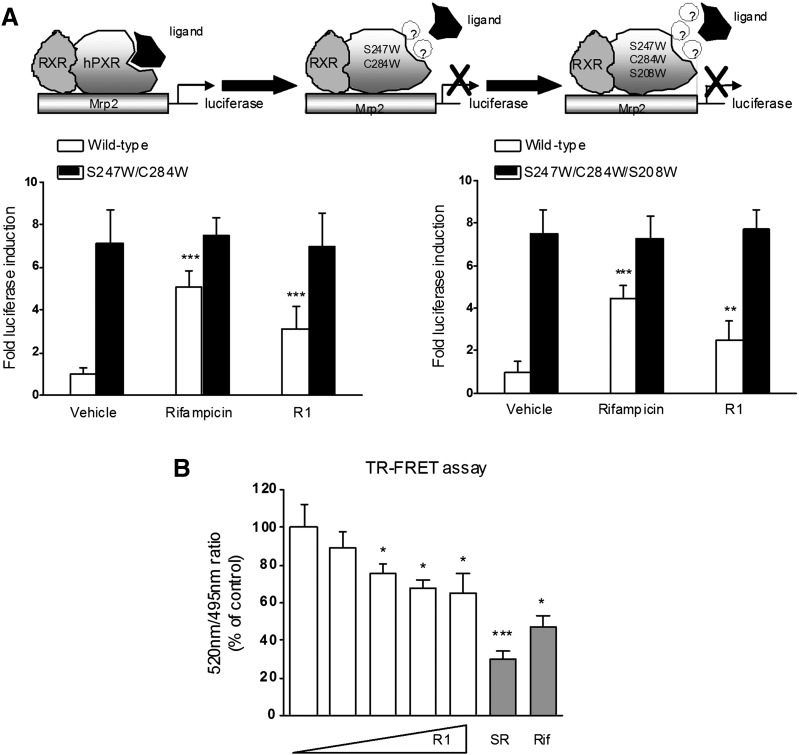Fig. 6.
Effects of R1 on the transactivation of PXR mutants and TR-FRET assay. (A) Transient transcription assays were performed in HT-29 cells cotransfected with MRP2-luciferase reporter, pRL-TK, and the wild-type hPXR (pSG5-hPXR) or the hPXR double mutant (S247W/C284W) or the hPXR triple mutant (S247W/C284W/S208W). The cells were treated with R1 (0 and 25 μM) or rifampicin (Rif; 10 μM) for 24 hours. Luciferase activities were measured, and the results are expressed as the fold induction compared with that of the control cells. The results are presented as the means ± S.D. of three independent experiments. **P < 0.01; ***P < 0.001 versus vehicle-treated cells. (B) The LanthaScreen TR-FRET competitive binding assay was used to evaluate the ability of R1 (0, 12.5, 25, 50, and 100 µM) to interact with PXR in vitro. Rifampicin (10 µM) and SR12813 (SR; 1 µM) were included as positive control PXR ligands. The TR-FRET ratio was calculated by dividing the emission signal at 520 nm by that at 495 nm. The results are expressed as the means ± S.D. from a representative experiment performed in quadruplicate. *P < 0.05; ***P < 0.001 versus vehicle-treated cells. RXR, retinoid X receptor.

